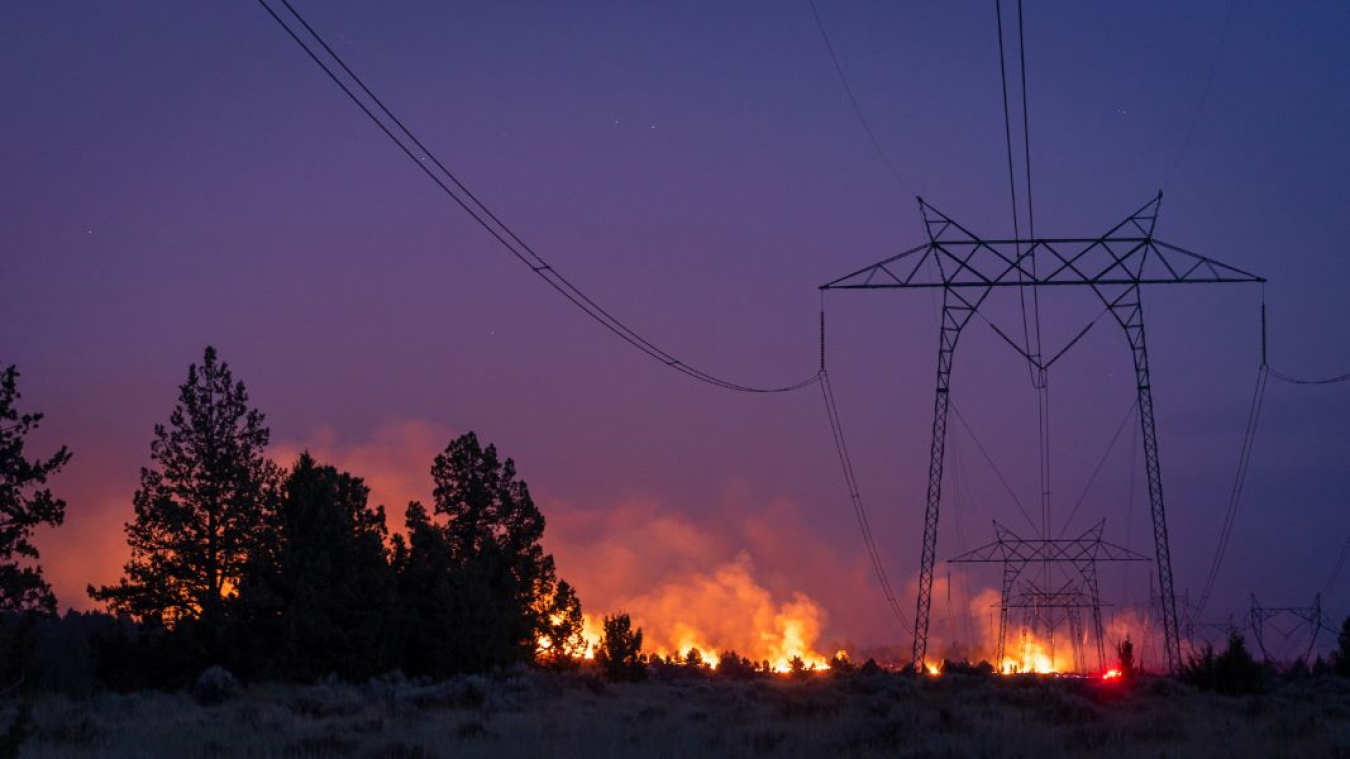Billions of dollars through the historic Grid Resilience and Innovation Partnerships (GRIP) Program means increased wildfire prevention and energy resilience across the United States.
October 25, 2023Billions of dollars through the historic Grid Resilience and Innovation Partnerships (GRIP) Program means increased wildfire prevention and energy resilience across the United States.

In the summer of 2023, from Hawaii to Maine, millions of Americans experienced the impact of wildfires in their daily lives. Around the world, people watched with horror as fires on the island of Maui engulfed the historic town of Lahaina, causing billions of dollars in damages and economic losses, devastation to local communities, and the tragic loss of human life. As the climate warms, such drought conditions will become more common, leading to increased wildfire risk in many parts of the United States. This underscores the need to modernize and strengthen our nation's electric grid, protecting customers' access to electricity during wildfires as well as mitigating the risk of wildfires due to our nation’s aging transmission and distribution infrastructure.
On October 18, 2023, the Department of Energy (DOE) announced up to $3.46 billion for 58 projects across 44 states to strengthen electric grid resilience and reliability across the United States, all while improving climate resilience and creating good-paying union jobs. These projects will leverage more than $8 billion in federal and private investments as part of the Grid Resilience and Innovation Partnerships (GRIP) Program, funded through the Bipartisan Infrastructure Law and administered by DOE’s Grid Deployment Office (GDO). There are various strategies to protect the grid from wildfires, and many GRIP awardees will implement projects to build resiliency and safety into our electric system.
Approximately one quarter of all GRIP projects in this round of funding will implement wildfire mitigation strategies. These efforts may include, but are not limited to, undergrounding vulnerable overhead lines and removing hazardous vegetation like trees before they become a problem; installing critical technology to protect the grid from high winds and fire, such as sensors, fire-resistant poles, and covered power lines; as well as improving modeling capabilities to better identify faults and risks in advance.
One example of a GRIP-supported initiative to mitigate wildfires is Holy Cross Energy’s Wildfire Assessment and Resilience for Networks, also known as WARN. In conjunction with NRECA Research, Holy Cross Energy will launch a wildfire mitigation project of more than $145 million across 16 states in the central and western United States with a consortium of 39 small, not-for-profit electric co-ops to drive energy resilience in high-risk rural areas. The Wildfire Assessment and Resilience for Networks (WARN) will enable co-op consortium members to harden – or protect – their electrical infrastructure from wildfires, as well as use modeling technology to analyze, prepare for, and mitigate the potential impacts of utility-ignited wildfires.
Xcel Energy, a utility company implementing seven projects in its Colorado, New Mexico, and Texas service territory, will also leverage $242 million in GRIP funds to provide system-wide wildfire risk mitigation strategies, including clearing vegetation around power lines, installing non-expulsion fuses and wood pole fire-resistant coating, undergrounding miles of high-risk distribution infrastructure, and more. Xcel is also implementing two state-of-the art resiliency projects: a partnership with the World Resources Institute to test a school bus-to-building electric vehicle (EV) project, providing a critical public facility with power in the event of an electrical system disruption; as well as a partnership with WeaveGrid to develop an EV charging program to ensure that people needing to evacuate a fire area can easily charge their vehicles and escape.
These are just a few examples of GRIP projects that will not only leverage existing grid technologies, but also demonstrate the effectiveness of state-of-the art technologies, laying the groundwork for implementation in other parts of the country. These critical investments in our nation’s grid infrastructure will be vital in keeping the power on during natural disasters and protecting our communities from wildfire across the United States.
The full list of selections, with accompanying fact sheets that provide more detail on each project, can be found here. This blog is part of a series taking a deeper look at trends across the first round of GRIP selections. Catch up on the other blogs:

